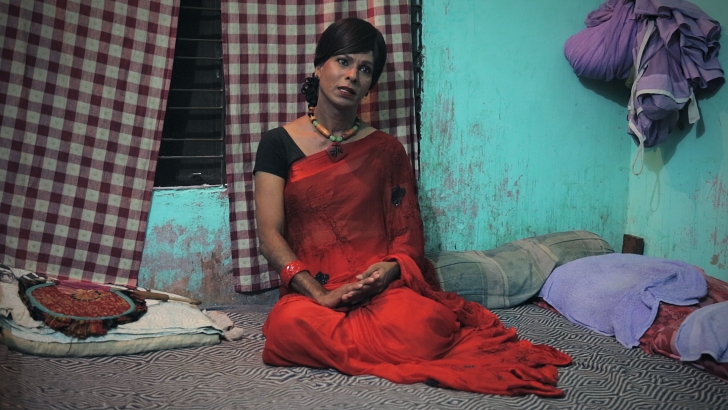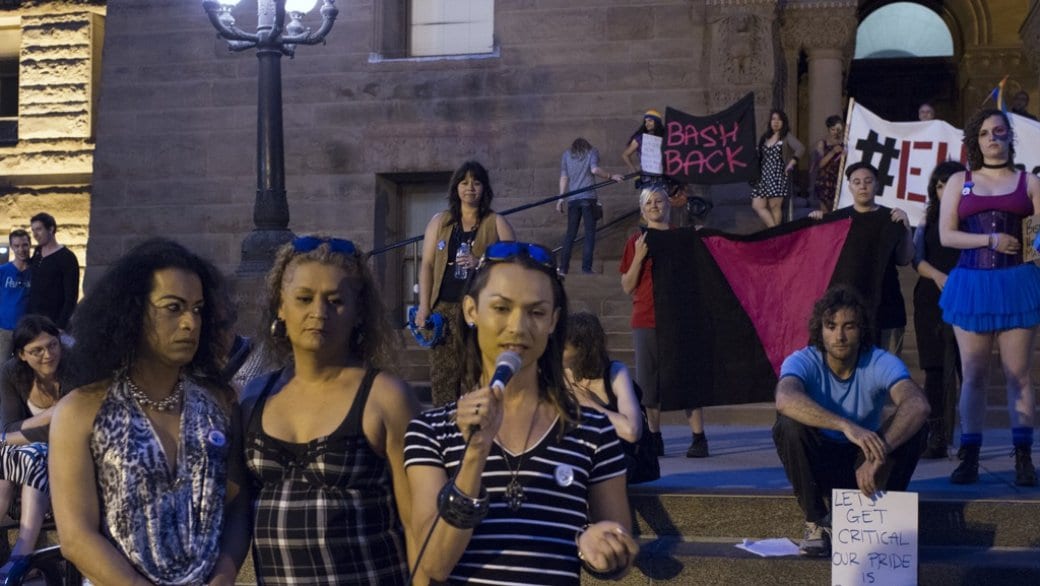It’s been nearly 40 years since the earliest gay film festivals first sprang into rainbow-coloured existence. Ranging from one-off screenings to sprawling 10-day programs, there are now more than 300 annual events around the world dedicated to the LGBT genre.
You might think that means enough opportunities for queer artists to present their work. But Kami Chisholm disagrees. Against the backdrop of Toronto Pride and in the wake of Inside Out (one of the world’s largest LGBT festivals) Chisholm will launch the first ever Toronto Queer Film Festival.
“The main motivation was a feeling of frustration with the mainstream, corporate-focused nature of many of the more institutionalized LGBT cultural organizations like Pride Toronto and Inside Out,” she says. “I feel like Inside Out refuses to program films that feel relevant to the community, especially by people who are on the margins. There’s a lack of focus on contemporary political issues and a drive toward work that’s more narrative and has a higher production value, but that’s apolitical in nature.”

In Let Me Be Me, Not a Man, Not a Woman, But a Hijra, Katha a hijra activist, fights against the hurdles she and her community have to overcome on a daily basis. (Photo Still: Let Me Be Me)
Chisholm’s made no secret of her beef with large-scale LGBT organizations. Her documentary Pride Denied (which will screen during the festival) looks directly at the core of what she calls the “non-profit industrial complex;” organizations that started out as grassroots, community-oriented groups but have gradually strayed from their beginnings, frequently betraying the values of their founding pioneers.
“Most of these festivals started as a way to support work that wasn’t being shown elsewhere,” she says. “It’s frustrating to see what they’ve become, because there’s more focus on people who have money and big credentials. At a time when technology has created so many possibilities for upcoming filmmakers and DIY projects, this work is now being ignored by the spaces that were originally created to support it.”
The goal of TQFF isn’t so much to reverse the gradual slide from grassroots group to corporate monolith that many mainstream LGBT events have experienced over the decades. Rather, it was conceived as an alternative space for artists and audiences who don’t see themselves reflected elsewhere.
“Part of the reason for putting the event in the middle of Pride is to organize an alternative space,” Chisholm says. “Its focus is on talking about and showing work by and for the communities that are the most marginalized, people who feel they don’t have a place at Pride. It’s also important to show that we can do things without corporate sponsors. All we need is our talents and the will to come together.”
Unfolding over three evenings, the program features 21 works from queer creators, including Kyisha Williams, Mée Rose and Julius Manapul. Focusing on both artists and works that fall outside mainstream gay representation, the festival includes numerous experimental projects as well as a range of identities often absent from big budget festivals.
While many of these projects would have been at the front of the line when it came to choosing works for the early days of gay film festivals, Chisholm sees a lack of diversity in representation at these events. Through the process of growing bigger, she feels they have gradually come to exclude large segments of the community that founded them.

The short film White Fur follows a wolf mother/puppy trainer and their wolf pups/sled dogs. (Photo still: White Fur)
“There’s this sort of obsession these events have with getting bigger and bigger,” she says. “They need to sell more tickets to achieve this and so they start to cater to an audience who can spend more money. In the urge to grow, the assumption is that bigger is better and they’ve come to rely heavily on corporate sponsors and donations, so they are catering the material they present to please those constituents.”
“Especially in the post-marriage moment, where certain LGBT issues are mainstream, people want to hear happy, positive narratives of how things have been improved and how battles have been won,” she adds. “They don’t want to hear about the people who’ve been left behind.”
Besides creating a space for artists and works that can’t find space elsewhere, the event serves as a kind of call-out to the mainstream organizations Chisholm feels are letting down their communities. But does she think they will listen?
“In most ways, they’re not responsive to criticism,” she says. “Organizations like Inside Out and Pride Toronto are so corrupted by money and influence, people don’t trust them any more. We just need to start fresh from the ground up with new organizations and new ways of coming together. At the same time, I’d love to see them take note and listen. I hope we can challenge them to grow in ways that aren’t just about getting bigger.”
Toronto Queer Film Festival
June 22–24, 2016
torontoqueerfilmfest.com


 Why you can trust Xtra
Why you can trust Xtra


